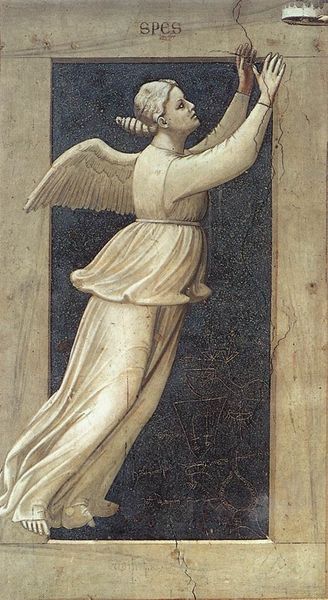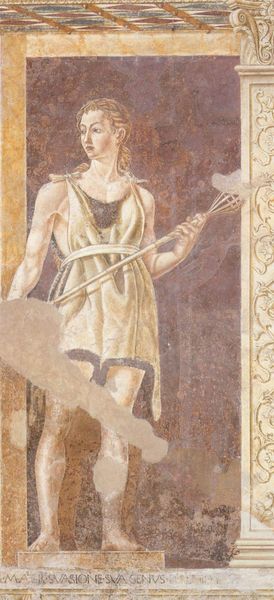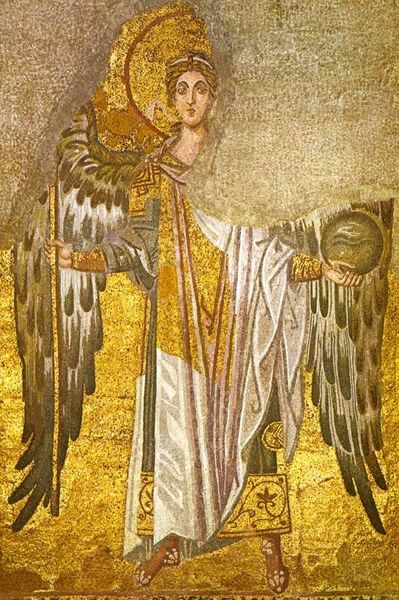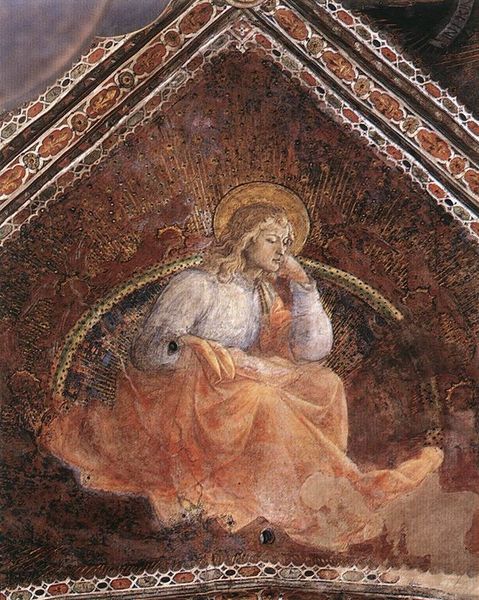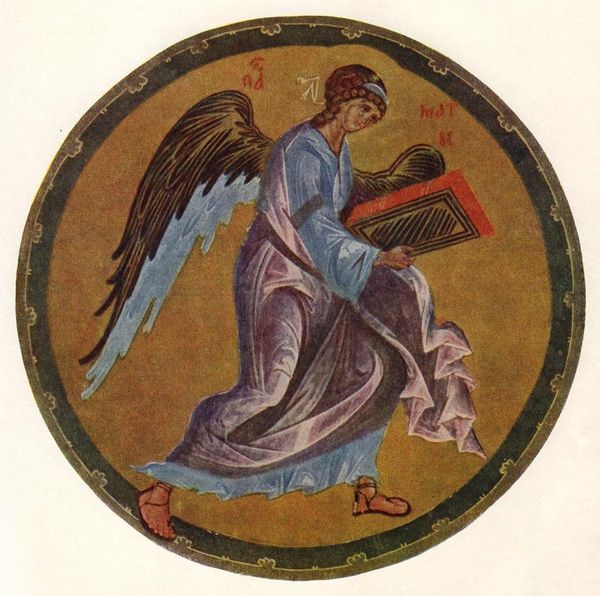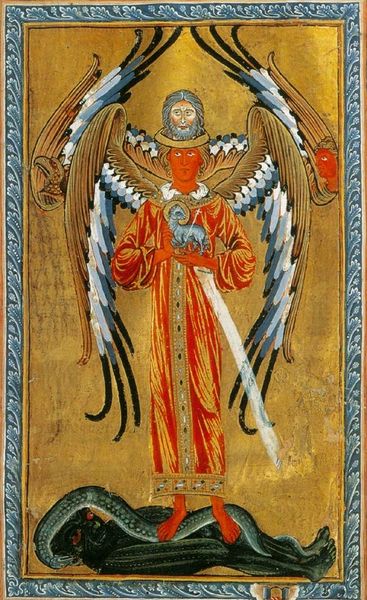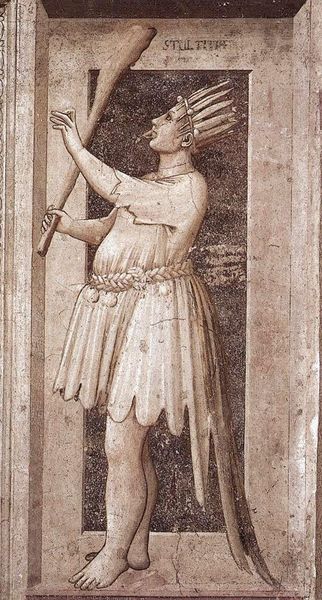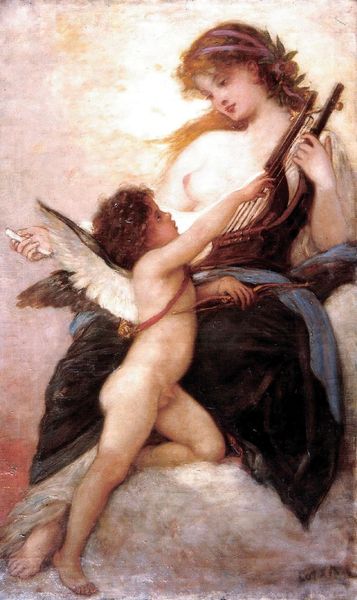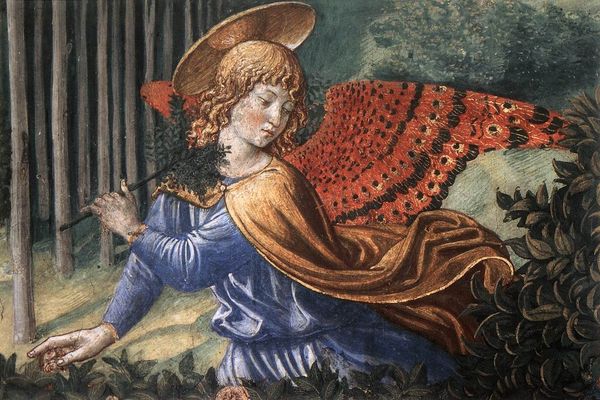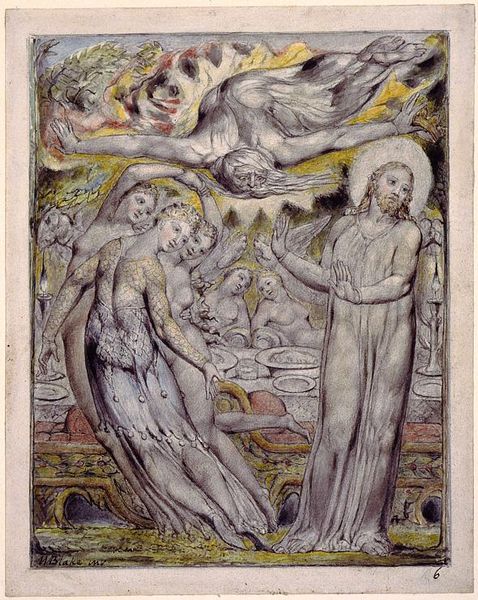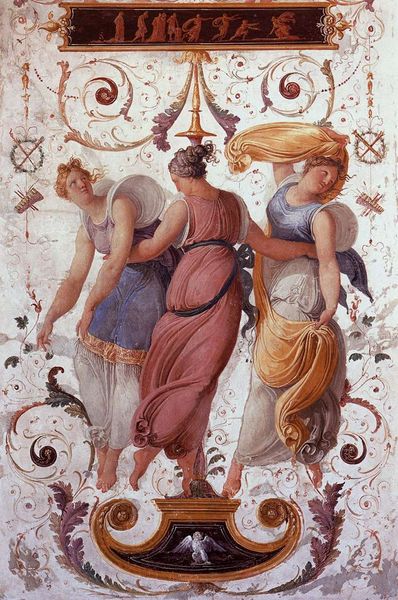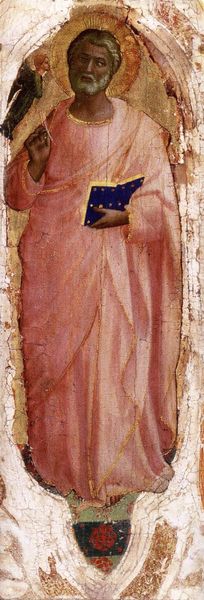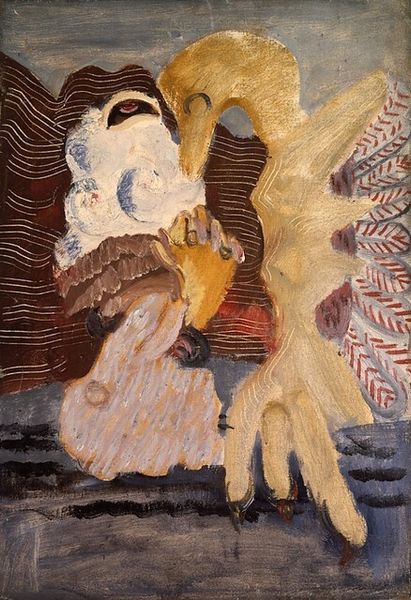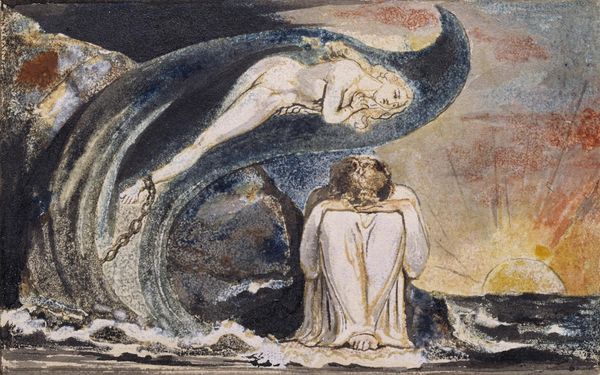
tempera, painting
#
gouache
#
medieval
#
tempera
#
painting
#
figuration
#
oil painting
#
mythology
#
history-painting
#
international-gothic
#
angel
Copyright: Public domain
Editor: We’re looking at "Angel," painted around 1399 by Melchior Broederlam. It’s tempera and gold leaf on wood, originally part of an altarpiece. What strikes me is the delicate balance between its somber mood and the vividness of the angel's wings. What do you make of it? Curator: It whispers, doesn’t it? It’s from that cusp of late Medieval and early Renaissance thinking. Broederlam is creating a figure who is otherworldly but also incredibly present. See how the folds of the garments pool, defying gravity and also mimicking it. Are they gold? Are they light? Are they both? The international gothic style, with its flat perspective, actually amplifies this ethereal effect for me. It feels like glimpsing something sacred just beyond our reach. The color has a real luminosity and a symbolism that I can't quite put my finger on, like the language of dreams. Editor: That’s interesting, I was focusing on the face… it’s almost melancholy. And you pointed out those amazing heavy robes. The artist used gold leaf with so much delicacy in the curls of the hair and border designs, it has a precious quality that pulls you in despite the dark wings. Do you think that contrast was intentional? Curator: Absolutely. Those red wings shout! This is more than decoration. Think about the message it sends when placed alongside the altar panel: a message about mortality, aspiration and something profoundly, unnameably holy. A divine paradox, if you will! Editor: So the artist is inviting us to consider both the beauty and solemnity within this heavenly figure. That really makes you think. Curator: Exactly. It’s about engaging, questioning, feeling the weight of that divine whisper across centuries.
Comments
No comments
Be the first to comment and join the conversation on the ultimate creative platform.
